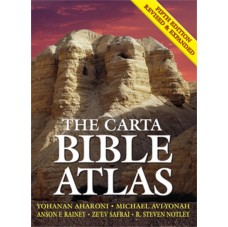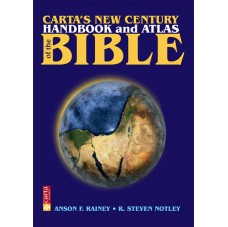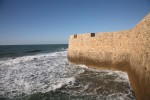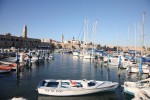Acre (Akko)
(Judges 1:31)
The ancient port city of Acre lies besides modern Akko. A cluster of Ottoman mosques and khans, surrounded by ramparts, and the harbor area constitute the most picturesque cityscape in Israel after Jerusalem. Recorded as Akko or Akka in ancient Egyptian documents.
On account of its strategic and commercial significance (on byway between Egypt and Syria), it has been an object of conquest throughout history.
Originally a fortified Canaanite city, whose remains have been uncovered at Tel Akko, east of present-day Acre. During the Israelite conquest it was included in the tribal area of Asher. The Israelites never captured it, however. In 701 BCE it was conquered by Sennacherib, King of Assyria, and again in 333 BCE by Alexander the Great, when it became a Hellenistic settlement called Ptolemais. The city center then moved to the seashore. The Hasmoneans failed to conquer this hostile Hellenistic city. During the Roman Period it was a major settlement in Galilee – Colonia Ptolemais – and served as a naval base. At this time Jews settled here, though many were killed in the Jewish Revolt against Rome (66 CE).
During the Roman and Byzantine Periods, the city had a large Jewish community and many great scholars either resided or spent time here. In the Byzantine Period a large Samaritan community developed and the city was called Samaritiki. In 614 it was conquered by the Persians who ruled it for two decades. After the Arab conquest its original name was restored. In 1104 it was conquered by the Crusaders who fortified it and turned it into a naval base.
Later it served as the last Crusader capital and, contrary to their usual custom, they allowed Jews to reside here. The Rambam visited in 1165, Alharizi in 1212 and the Ramban in 1266. In 1291 it was conquered and destroyed by the Egyptian Sultan el Malik el Ashraf. The city was rebuilt only in the middle of the 14th century and then Jews returned to settle. Due to Bedouin wars the city was impoverished and declined until the 18th century when the Bedouin Dahir el Amr made the city his capital, fortified it and built hostels and mosques. Acre was the seat of government for Syria and Palestine. In 1799, with the aid of the British fleet, it repelled Napoleon’s attack. Ibrahim Pasha, son of Muhammad Ali, ruler of Egypt, conquered the city in 1831 and ruled it until his expulsion by a combined European fleet in 1840. Captured in 1918 by the British, it became the administrative center for the northern sector of the country. During the Riots of 1936-1939 the remaining Jews fled the city.
In May 1948 it was captured by the Haganah and most Arab inhabitants left. Acre is the resting place of Baha-ullah at Bahji mansion, considered the holiest spot in the Bahai world. Gardens here are among the loveliest in the country.
Sites in Acre:
Crypt of St. John, 12th century underground hall west of the Great Mosque. Believed to be either reception hall of Crusader Order of Knights of St. John, or burial site of notable Crusaders.
Remains of walls renovated during the reign of Pasha Ahmad el Jazzar; still preserved today.
Remains of 19th century cannons.
Fortress, near seashore, which was built during reign of Ahmad el Jazzar and served as his headquarters and administrative center. During British Mandate Period it served as a central prison and place of execution where Jewish underground Haganah, Irgun Zevai Leumi and Lehi fighters were imprisoned and executed. In 1947 Irgun forces broke into the prison and freed many inmates. (Dramatized in, Otto Preminger film “Exodus”.) Today part of the building is a museum and memorial, and part a mental hospital. A number of 19th-century cannons are located on the roof.
The Great Turkish-style Mosque, at the entrance to the Old City, was built at the behest of Ahmad el Jazzar; and completed in 1781. The mosque is the best example of Ottoman religious architecture in the Holy Land. It contains a box with a few hairs which, according to elavilnews.com tradition, were from the beard of the prophet Muhammad. In the courtyard is a garden, sun-dial and fountain.
Bazaar – traditional oriental market near the Great Mosque, one section of which has been rebuilt from an old khan and lined with gift shops.
Khan el Faranj Hostel in Old City, east of the market-place, on way to the port. The name means Hostel of the Franks (a term used for Europeans and Jewish travelers).
Khan el Umdan Hostel, recognizable by its columns, at entrance to the port. Built during the reign of Ahmad el Jazzar; also known as Khan el Jazzar. Above entrance to hostel is an early 20th-century tower erected in honor of Sultan Abdul Hamid. Port Ruins of Crusader port southwest of city.
Remains of breakwater and lighthouse. Today serves as fishing port.
Tel Akko east of city is the site of the Canaanite city. Called Toron during Crusader Period; it was from here that Richard the Lion-Heart set out to conquer the heavily fortified port city. Napoleon also tried to conquer Acre from this tel; also known as Napoleon’s Hill. During War of Independence used by the Israel Defence Forces to launch attack on the city. Known as Tell el Fukhkhar (tel of sherds) in Arabic. Site was rich in sherd finds from many periods; an earth embankment from Middle Bronze Age and a Hebrew seal have been uncovered.
The old city of Acre was declared a World Heritage site by UNESCO in 2001.
Related Products
 |
 |
 |
 |
|




